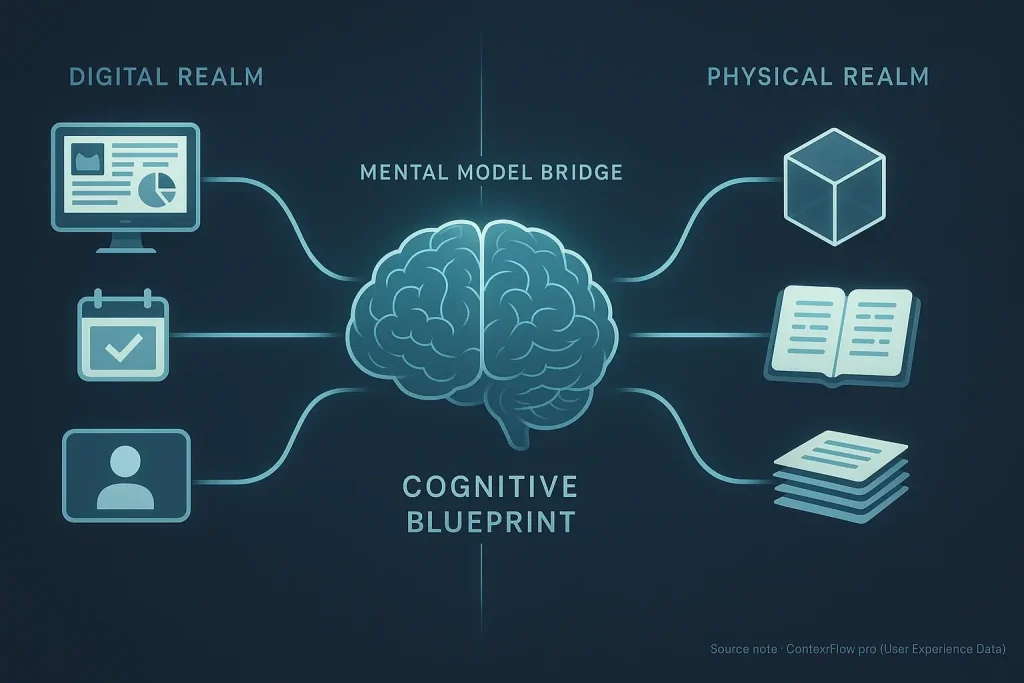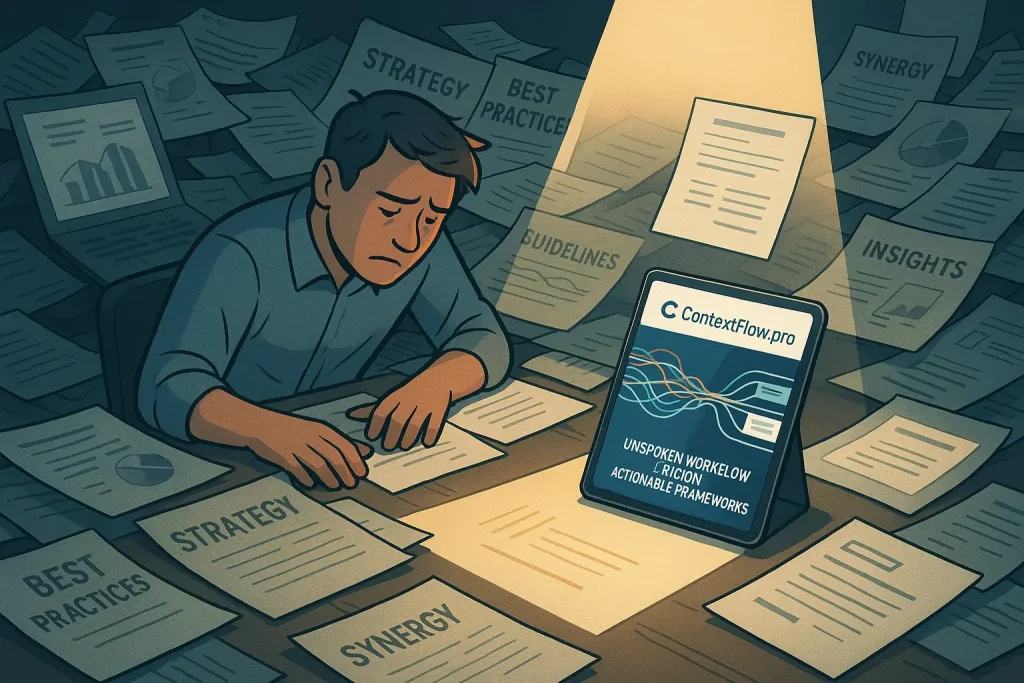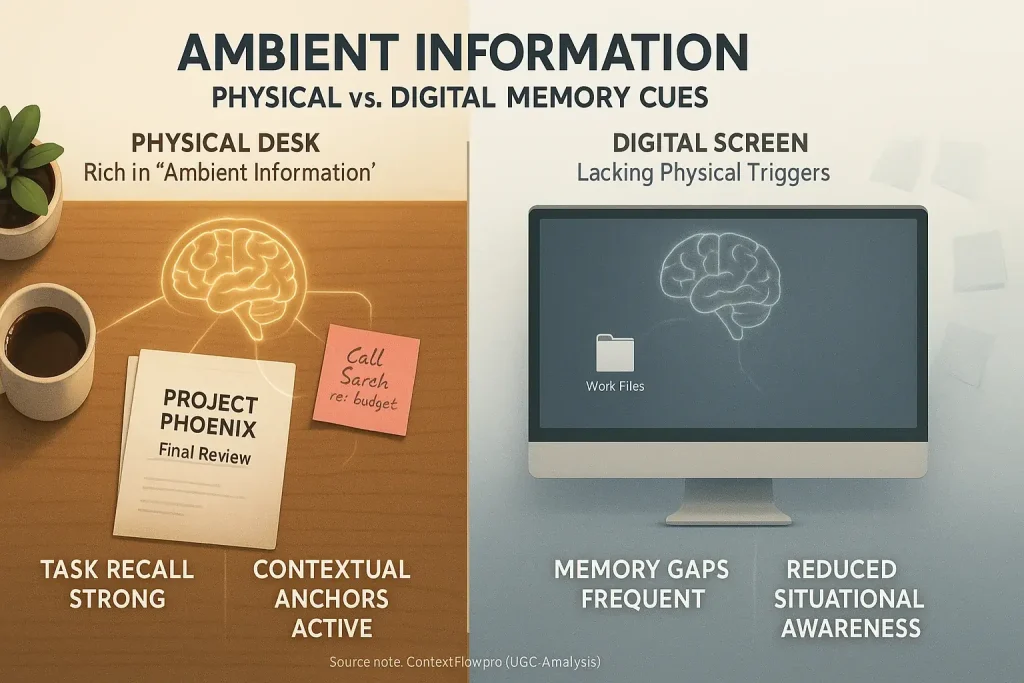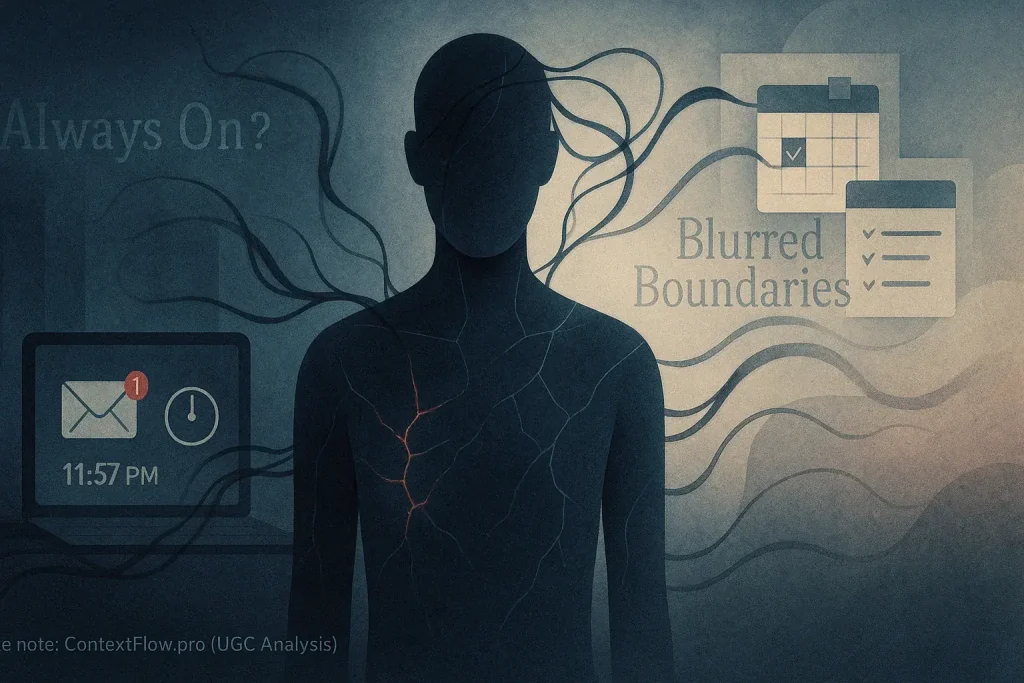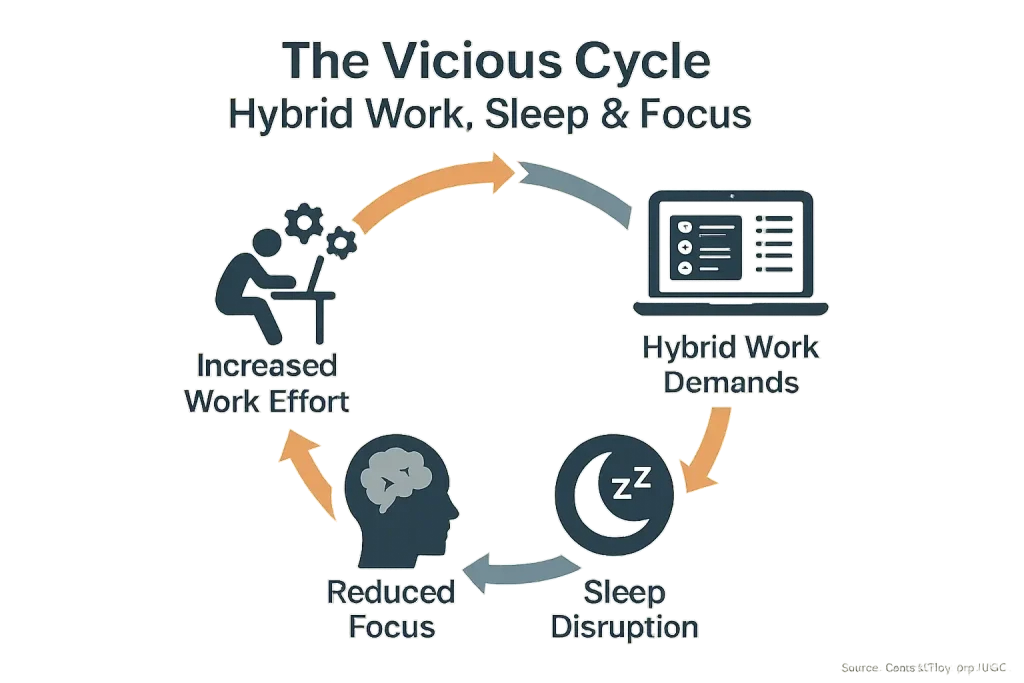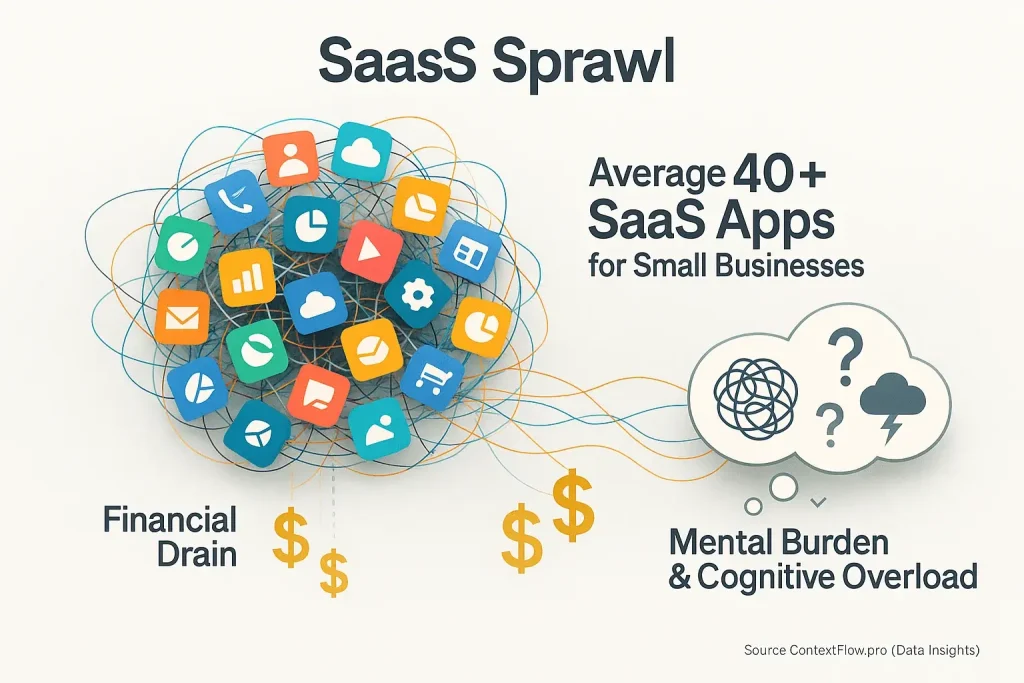The Silent Saboteur: Why Asynchronous Communication Can Still Kill Your Deep Focus
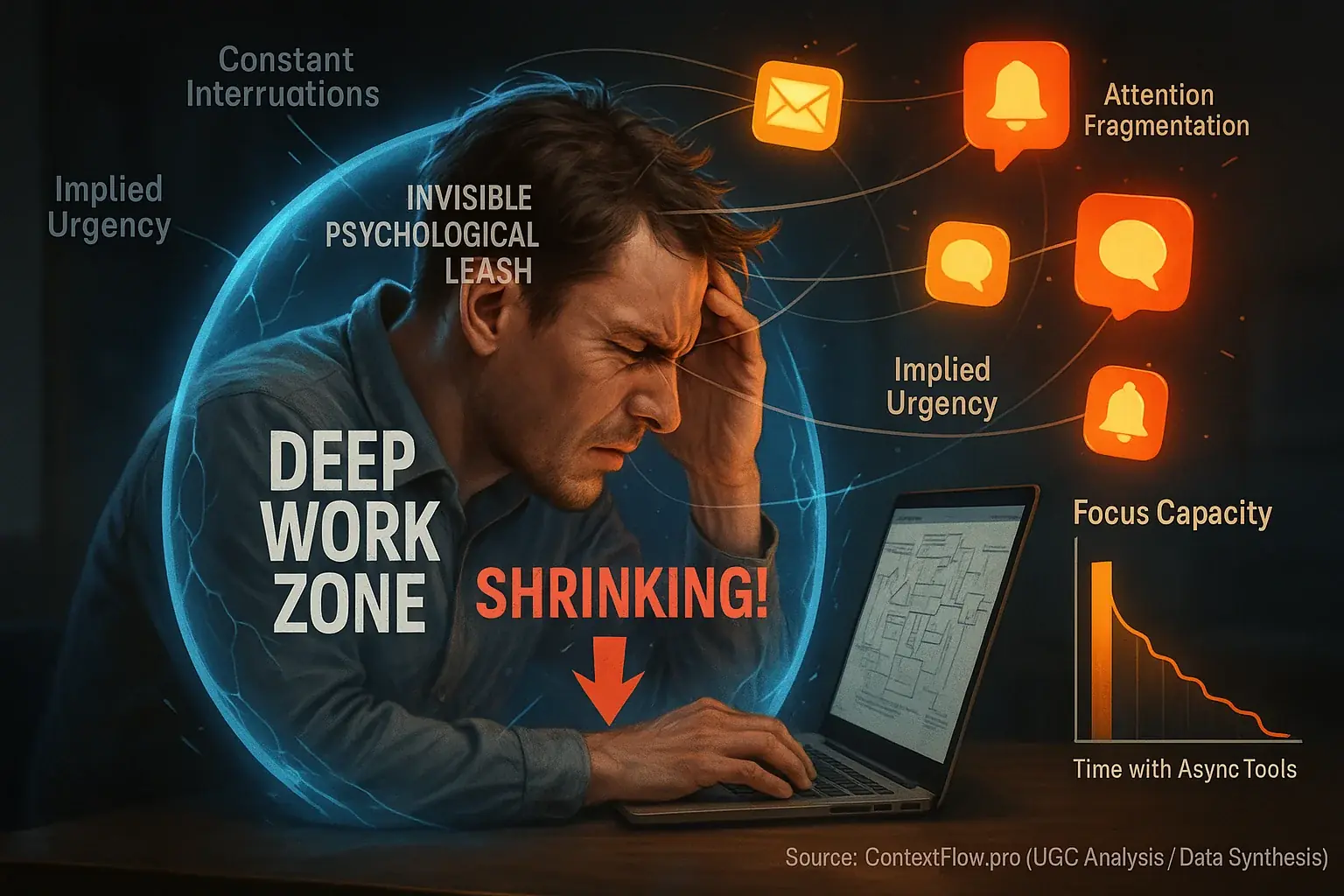
Ever feel your 'async' tools – Slack, Teams, email – sabotage your focus? You are not alone. These platforms promise freedom. They often create constant, subtle interruptions. Our analysis of user experiences confirms this widespread frustration.
The real issue? It's the pressure. It is not merely the notification ping itself; it is the invisible psychological leash. This leash makes users feel compelled to check, to respond, to 'just quickly glance'. This persistent, low-level anxiety fragments attention. We see patterns where this unspoken expectation sabotages focus more than overt demands.
Deep work becomes impossible. This constant monitoring prevents genuine cognitive immersion. How can your brain dive deep when always on alert, anticipating the next ping? This is not just an annoyance. It is a major productivity killer. Our research into user-generated content shows this experience is common across industries.
The 'Ping' Problem: How Perceived Urgency & FOMO Steal Your Attention
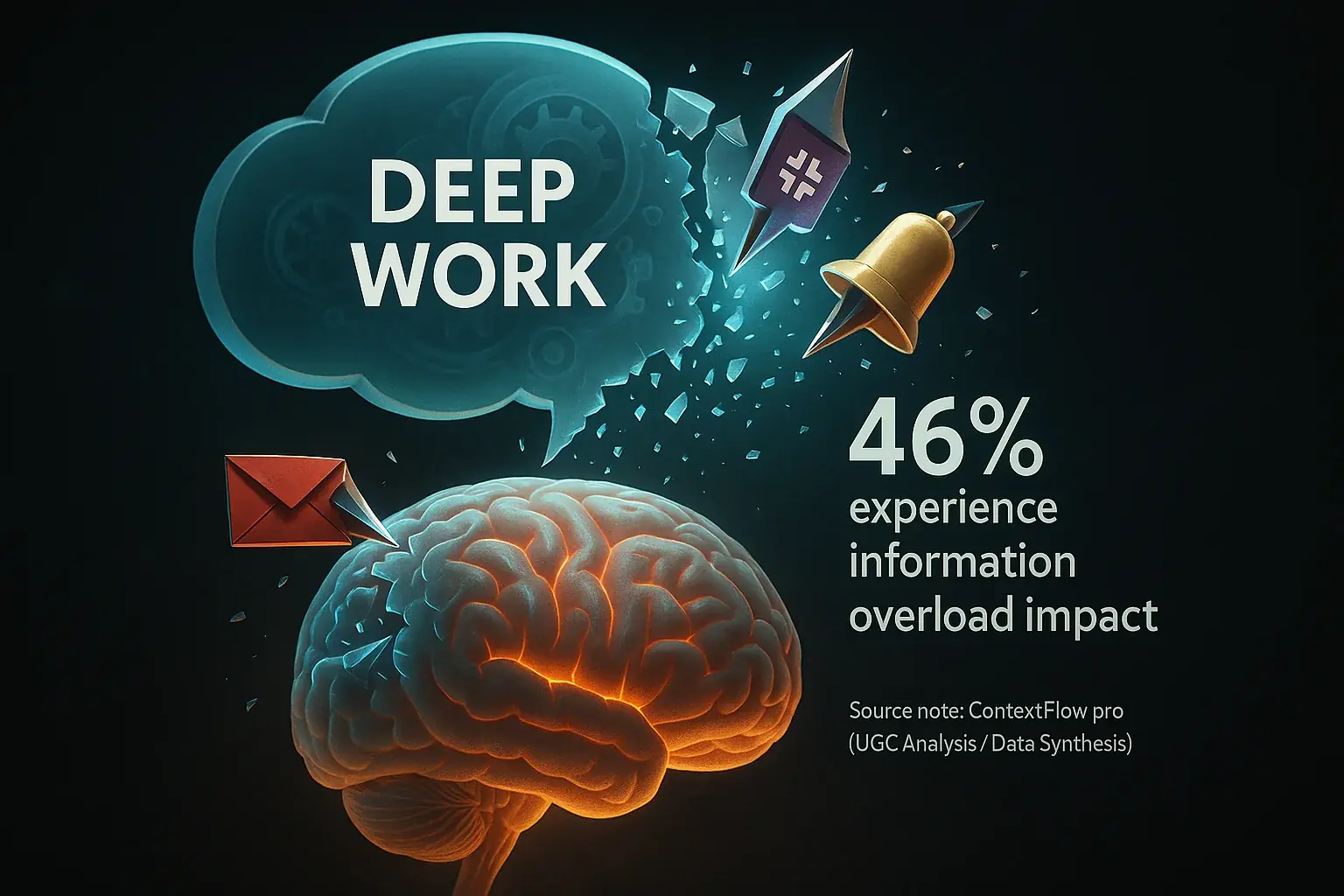
That little notification sound arrives. It is not just a sound. It is a tiny siren, pulling your attention away. Users report a distinct jolt. An immediate urge to check. This happens even when they suspect the message lacks true urgency. The brain's reward system can get hooked on this checking behavior.
Then there is the Fear of Missing Out. FOMO whispers constantly. 'What if that message is important?' 'What if a key decision is made without my input?' This anxiety fuels constant monitoring. It intrudes even during dedicated 'focus time'. Our analysis, supported by recent data, shows information overload affects nearly half of workers. This directly impacts productivity.
One user perfectly captured this internal conflict. 'I know I shouldn't check Slack every five minutes. I just can't resist. The worry is I'll miss something critical, then I'm playing constant catch-up.' This pervasive vigilance is utterly exhausting for many professionals. Is this your experience too?
This continuous tug-of-war fragments focus. Notifications battle deep work. True immersion becomes a rare luxury. It is not a daily habit for numerous hybrid workers. Attention simply shatters.
Breaking the Flow: Why Asynchronous Interruptions Destroy Deep Work
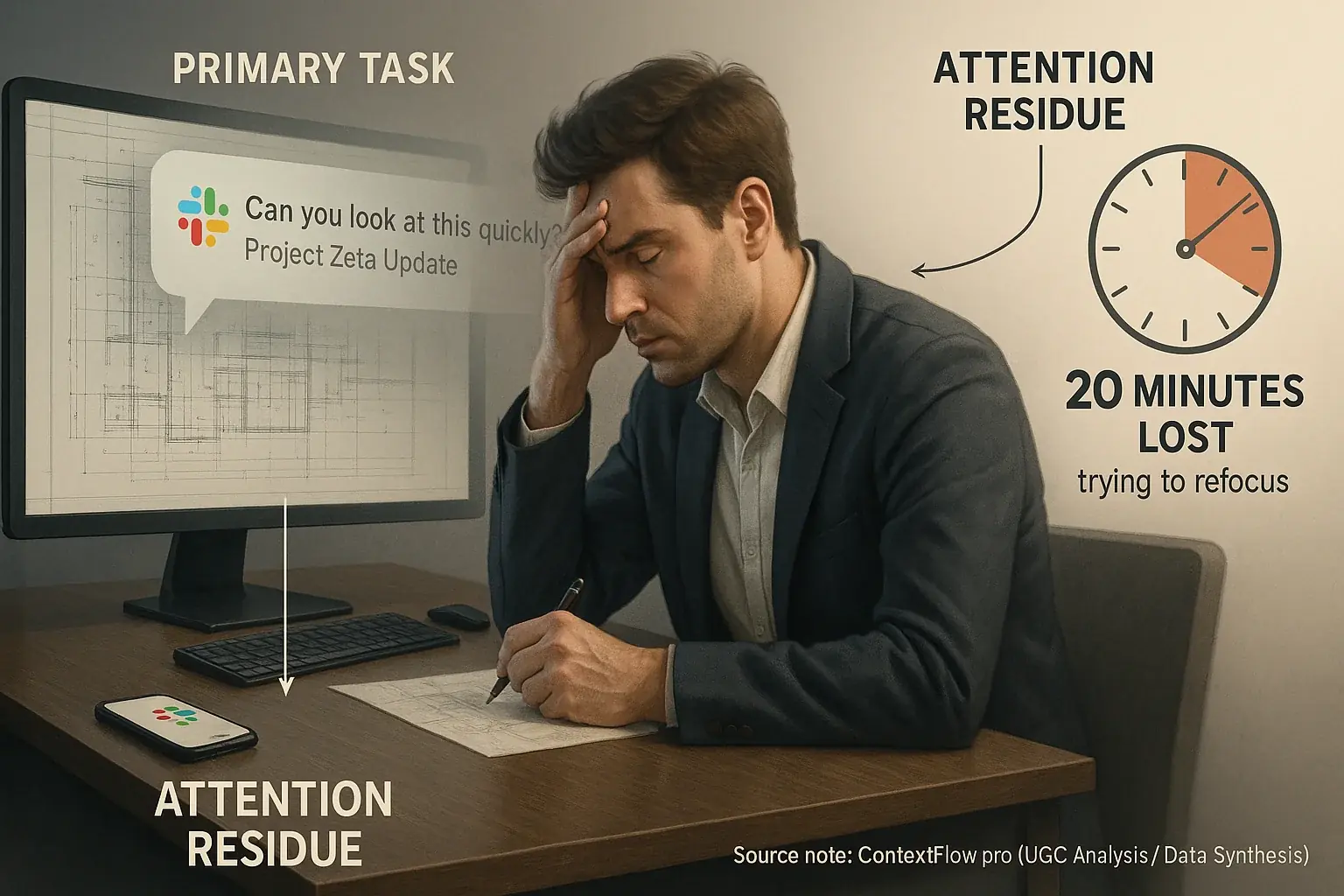
You know that feeling. Complete immersion in a task. Time simply melts away. That powerful experience is 'flow state'. Real deep work happens there. But asynchronous pings? They are flow state's dedicated destroyers. This focused mental state is incredibly delicate. One brief, seemingly harmless notification can shatter it instantly, pulling you out of productive depth.
Here’s the insidious part. Even a quick glance at a notification leaves a mental echo. Your brain does not instantly switch back to your primary task. It continues to partly process that alert, that small piece of new information. This lingering cognitive trace makes fully re-engaging with your deep work significantly harder. Users frequently express this exact frustration. Many report, "I just lost twenty minutes trying to get back into what I was doing, all because of one quick Slack message." This struggle to recapture concentration is a widely shared pain point.
The true cost extends far beyond the mere second spent checking a message. It encompasses the many minutes, sometimes much longer, your brain needs to truly regain that previous level of focus. This is the hidden cognitive tax of asynchronous interruptions. These small moments of lost concentration accumulate with alarming speed. The cumulative effect fragments your workday. It ultimately degrades the quality and quantity of your output.
Is Your Async Communication a Focus Trap? Take Our Audit!
Async Communication Focus Audit
What did your audit reveal? Sneaky focus traps often hide in async habits. Many professionals report these surprising discoveries. Self-awareness is the crucial first step to reclaiming your focus.
This audit offers an initial snapshot. Our analysis of user experiences highlights a critical truth. Understanding your specific async triggers builds workflows that genuinely support deep work. Explore ContextFlow.pro for more proven strategies and tools.
Reclaiming Your Focus: User-Tested Strategies to Tame the Async Pressure
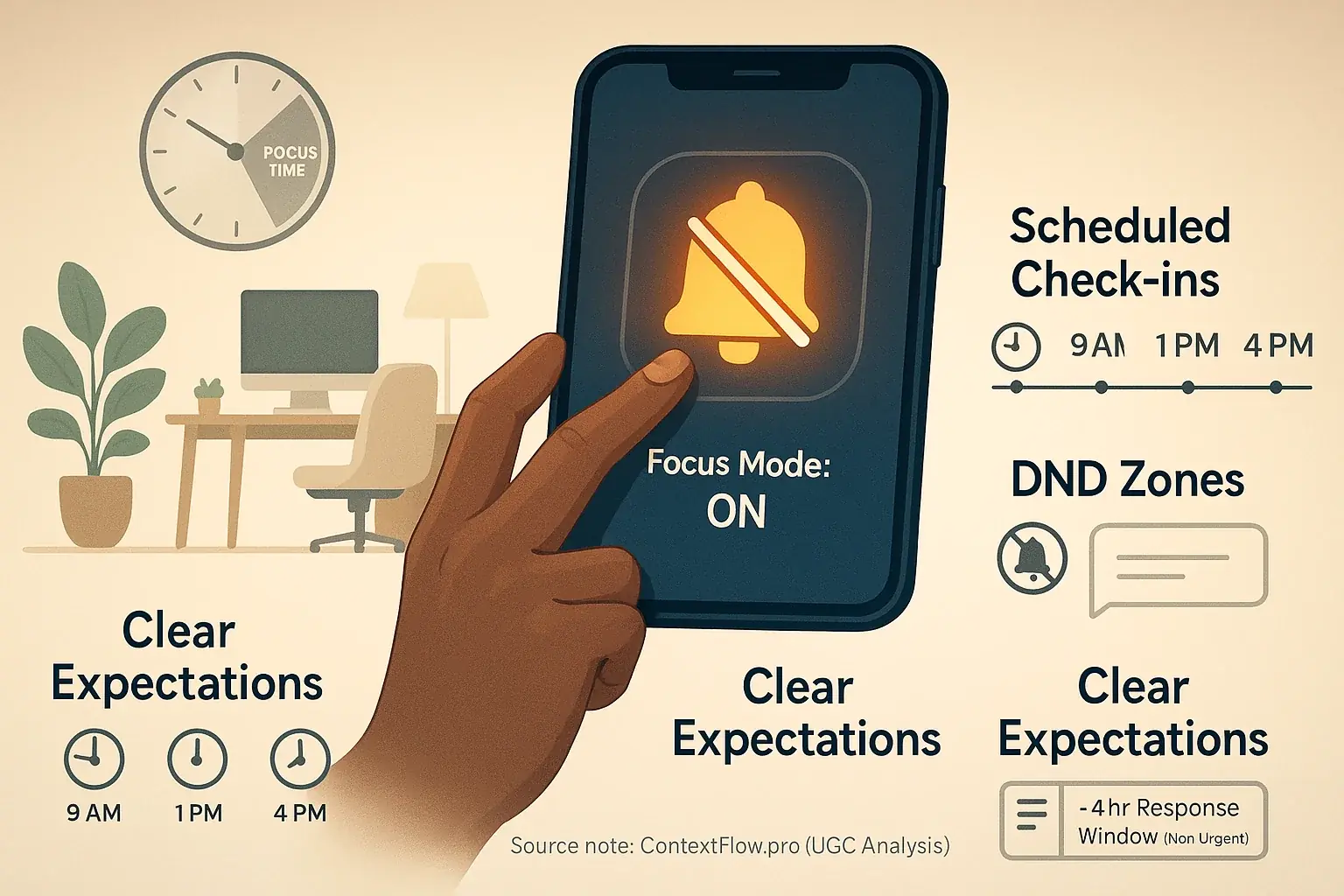
Async communication often feels like a trap. Constant pings shatter concentration. The good news? You are not doomed to this digital barrage. Thousands of users battled async pressure. They found ways to win. Here are their top, battle-tested strategies.
- Scheduled Check-ins: Users advocate dedicated 'async check-in' times. Avoid reacting to every single ping. 'I check Slack at 9 AM, 1 PM, and 4 PM. Period,' one user shared. 'My focus blocks are sacred.' This simple habit breaks the demanding 'always-on' cycle.
- Utilize 'Do Not Disturb' Modes & Focus Blocks: Your tools include DND. Use it. Users swear by blocking 'focus time' on calendars. They activate DND. 'It is like putting up a 'Do Not Disturb' sign on your brain,' says another professional. This protects precious deep work.
- Communicate Clear Response Expectations: This change is a game-changer. Talk to your team. Set clear guidelines. 'We agreed as a team that non-urgent messages get a 4-hour response window,' one manager reported. This simple pact frees everyone from that instant reply pressure.
- Leverage Async for Its Strengths: Remember async's core purpose. It excels for thoughtful, non-urgent communication. Use it for detailed updates. Use it for long-form discussions. Use it for information sharing. 'It is not for emergencies; that is what a quick call is for,' many users emphasize.
Implementing even one strategy dramatically shifts focus. It is about proactive communication. Avoid reactive patterns. Take control of your async world.
The Bottom Line: Master Your Async, Master Your Focus
Async tools are incredible enablers of hybrid work. They also present a double-edged sword. Without intentional management, these platforms can silently erode your most valuable asset: focus. User experiences confirm this daily reality, highlighting a pervasive challenge in modern workflows.
The good news? You hold the power to change this dynamic. Understanding the 'responsive trap' is fundamental. Applying user-tested strategies lets you master async communication, reclaiming your deep work. This proves a game-changer for productivity and your peace of mind.

